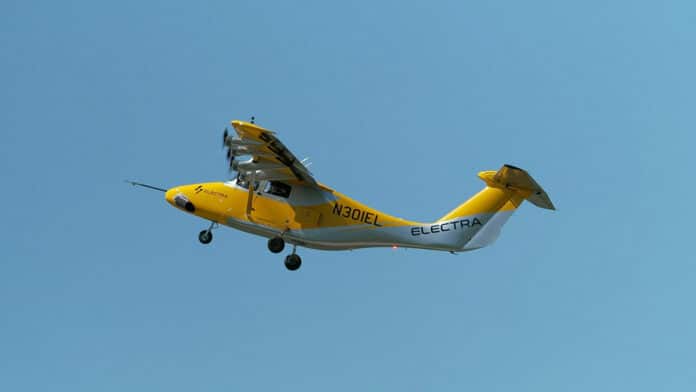Electra has recently announced receiving a Small Business Innovation Research (SBIR) contract from the U.S. Army worth $1.9 million. The contract is meant to fund powered wind tunnel testing of Electra’s hybrid-electric short takeoff and landing (eSTOL) aircraft, in an attempt to explore the potential of Electra’s unique blown wing aircraft technology to broaden U.S. military capabilities. This is especially important for fuel-efficient, resilient logistics in contested environments.
Electra’s eSTOL aircraft is a groundbreaking innovation that merges the flexibility of helicopters with the performance and cost benefits of fixed-wing aircraft. The use of blown lift and eight electric motors enhances wing lift, allowing for takeoffs and landings in small spaces, such as a soccer field, while also reducing noise and fuel consumption when compared to traditional aircraft and helicopters.
Additionally, the hybrid-electric power system enables national security applications with ranges of over 1,000 miles without the need for battery charging stations.
Moreover, the passenger version of this eSTOL can accommodate nine seats, which is a lot more than most battery-electric air taxis. With its range, speed, and capacity, this aircraft could potentially transform regional air travel.
“There is a substantial benefit to employing the right-sized aircraft for a given payload-range mission,” said Ben Marchionna, Electra’s Director of Technology and Innovation. “It’s a very effective method to substantially reduce fuel use – or operational energy – in theater, which really matters for enabling distributed operations in contested locations.”
“Many of the most commonly deployed military logistics solutions in use today are flown well below their intended payload capacity. Our eSTOL aircraft can fulfill these missions while using dramatically less fuel, providing much more range, operating at significantly reduced noise levels, and utilizing the same constrained operational ground footprints. It’s an extremely compelling capability, and we’re thrilled to be working with the Army team to advance this key national security technology.”
The powered wind tunnel testing will undoubtedly prove to be a major boost for Electra’s aerodynamics database. This database will be crucial in analyzing the performance of the aircraft, developing control laws, and creating simulators. The wind tunnel tests will complement the ground tests and flight test program of Electra’s eSTOL technology demonstrator aircraft, providing valuable insights for the design and development of Electra’s production aircraft.
